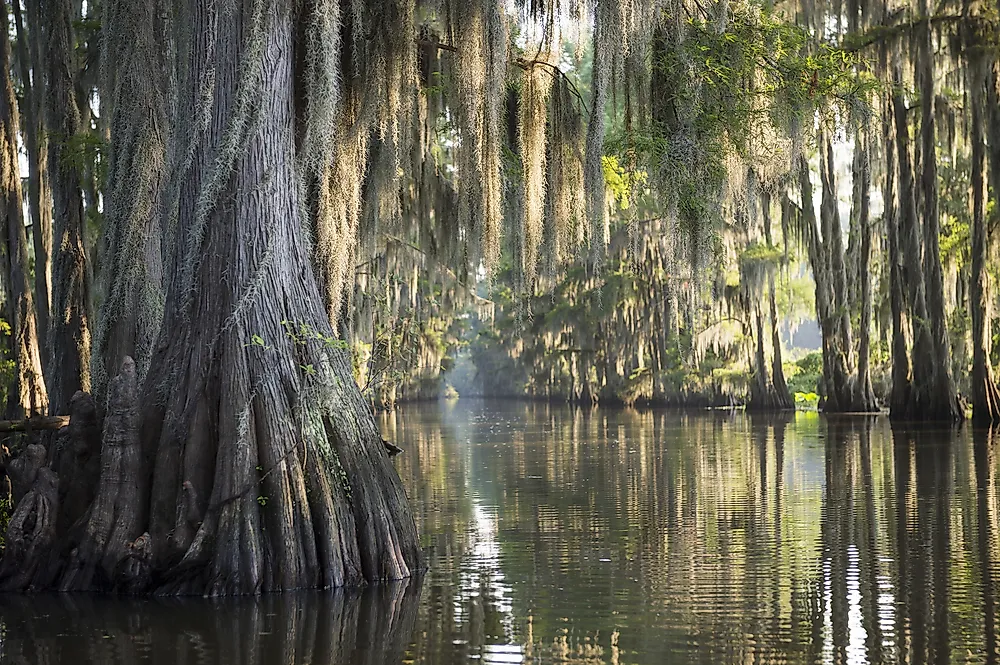What Is The Importance Of Swamps?

A swamp refers to a land area that is completely filled or is permanently saturated with water. It can be regarded as an intermediate area between land and water. There are two major types of swamps: freshwater swamps and saltwater swamps. The former is usually found inland while the latter occurs along the coasts. Swamps are often named after the most common type of trees growing there like hardwood swamps or mangrove swamps.
How Are Swamps Formed?
Freshwater swamps are usually found near lakes and streams where seasonal floodwaters or rain saturates the land with water. Water-tolerant vegetation like Tupelo and cypress trees grow in such areas. A number of species of amphibians, reptiles, fish, and birds survive in this ecosystem. The Everglades in Florida is an example of a freshwater swamp.
When bare flats of sand and mud are covered by seawater during high tides, salt-water tolerant plants like the mangrove plants often grow in such areas which then develop into saltwater swamps. This type of ecosystem supports crabs, shellfish, and a variety of other marine and coastal fauna.
Why Are Swamps Important To Us?
For a long period in history, humans thought of wetlands as sinister and forbidding places. They were regarded as the breeding grounds of a variety of pests including mosquitos that can spread epidemics. Swamps were also considered to be wastelands that had little or no use. Agriculture or construction activities were not possible on such lands. These areas were also not suitable for navigation or recreation activities. Thus, swamps were given little importance until science explained the usefulness of these wetlands.
Swamps Moderate The Effects Of Flooding
By retaining the excess rainwater or floodwater, swamps often protect dry lands from excessive flooding. A significant volume of floodwater gets diverted to these swamps before they reach the dry land and claim the lives of people and destroy property. Coastal swamps protect the coastal settlements from storm surges and cyclones. The trees present in these swamps act as a barrier to the strong winds and waves. The roots of the trees also prevent the soil and sand along coasts from being washed away by stormwater.
Swamps Purify Water
Swamps act like the water treatment plants of nature. When water containing wastes wash into the swamps, the plant matter and soil in the area absorb the impurities in the water. The water that flows out of the swamp is thus purified. Wastes include a variety of pollutants like the nitrogen and phosphorus-containing compounds obtained from fertilizers which enter the water bodies as agricultural runoff. Water polluted with domestic waste, industrial effluents, and sewage may also enter the swamps. Many of the chemicals like nitrogen and phosphorus are absorbed by the swamp plants through their roots. Those that are not used by these plants gradually collect at the bottom of the swamp as sediment and remain buried there.
Swamps As A Source Of Fuel
Ancient swamps are important sources of coal, a fossil fuel. Coal is formed from plant matter that accumulated for a period of millions of years. When plants die in swamps, the dead vegetative matter settles down at the bottom of the swamp. The anaerobic environment at such depths prevents the complete decay of the plant matter. As more and more vegetation keep accumulating in layers, the lower layers are subjected to pressure. The vegetative matter in these layers thus fossilizes to form coal. Such coal deposits can be extracted and used as fuel for a variety of activities like running automobiles or generating electricity.
Swamps Are Economically Beneficial
Swamps produce a variety of ecological products that are harvested by humans for personal and commercial use. Fish is one of these important products. The swamps near rivers, lakes, and oceans support a great diversity of aquatic life which can be harvested for consumption and sale. Many plants growing in swamps have medicinal qualities. For example, the red mangrove tree growing in some mangrove swamps have wound-healing, antibacterial, and antioxidant properties. Other products that can be harvested from swamps include fuelwood, salt, animal fodder, dyes, tannins, etc.
Swamps Across The World Need Protection
Given the above-mentioned benefits obtained from swamps, it becomes clear that such ecosystems need to be conserved for the well-being of all. Sadly, swamps today are destroyed to make way for the expansion of human settlements and activities. Massive tracts of swamps have disappeared in recent decades only to be replaced by human settlements and farmlands. Only recently, people have learned about the importance of these wetlands in the ecosystem. Thus, protective measures are now being adopted by the government and non-governmental organizations to conserve the remaining wetlands of the world.











